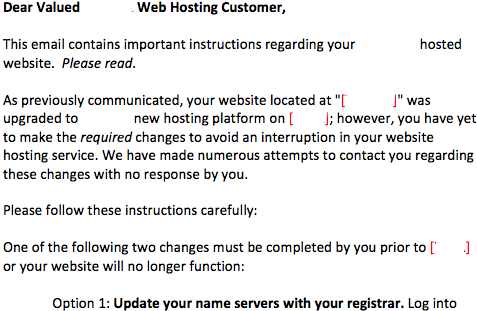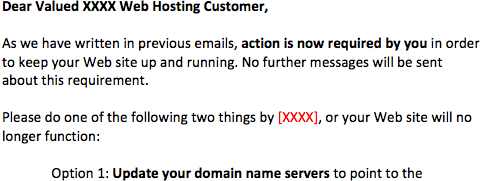Ever find yourself thinking more about the placement of words than the words themselves? I do. And I think it’s a big part of being a good tech communicator.
Placement is key. Everything should be in its place. In my post about FAQs, I mentioned that we should always give the bad news up front.
Now I’d like to say the same thing about anything that’s important. So here I go:
Put anything important up front.
What’s important? Anything the reader MUST do. Any penalty the reader will pay for NOT doing it.
If you write beautiful prose, but stick it in the wrong place, no one will read it.
Here’s an example of an email I was asked to edit. Ask yourself, would you read this email? [Please forgive the erased bits.]

Here are the worst problems:
- You have to read a lot to find out what happens if you don’t read it.
- The information about what happens is buried inside a long paragraph. Might as well not have been written.
- The reader is berated before even getting to the instructions.
Leaving the writing aside, the placement of my first edit puts the important stuff right in front of the reader’s face. Where it belongs.
What do you think? Is the placement as important as word choice? Are there other places, besides the beginning, where certain things should go?
See:



I’d say yes. Word placement is very important. I found in some documentation usability testing that users could be led to do the wrong thing if certain information wasn’t in the right place. Placement is especially important, I think, when a particular sequence of actions must be followed. That sounds obvious, but it’s not always obvious in practice. I’m planning a post on my blog about writing conditional procedures, which is a good example of this.
Ben, the sequence thing is interesting. I agree that sometimes it makes sense to ask, “is the next thing on the page REALLY the next thing that needs to be done?”
I look forward to your post.